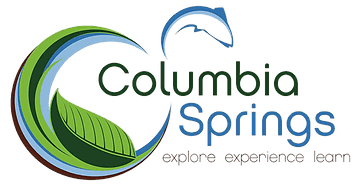Columbia Springs
Salmon in the ClassroomConnecting Students with Salmon, Science, and Stewardship.
In The Classroom
Bring Science to Life at Your School
Each year we help over 50 teachers raise coho salmon at their schools in classroom aquariums. As students take care of their salmon throughout the school year, they engage in project-based learning about salmon life cycle, biology, and habitat. By the time students release their salmon into local streams at the end of the school year, they feel connected to their salmon and personally invested in protecting them.
Questions? Email sitc@columbiasprings.org or call 360-882-0936 x 228.
Join Our Program
Interested in joining SITC? First, read our “Steps for Joining” to learn more. Next, submit your Program Application Form by March 31st for consideration for the following school year. SITC staff will notify you when your application form is received, and again when your permit from WDFW is approved. After that, we’ll schedule an orientation meeting and tank set-up date! All materials are generously provided by Clark Public Utilities. We look forward to working with you!
Teacher Resources
Are you a current SITC participant? Find everything you need on our Teacher Resources page, whether you’re looking for curriculum resources, salmon care guides, or our list of program offerings for your next classroom visit. Discover the materials SITC teachers use to promote inquiry, NGSS learning, and a sense of stewardship among students.
Salmon in the Classroom
School Year Timeline
September-November
Each School Receives Fingerlings
We personally deliver 10 coho salmon “fingerlings” to each participating school. We kick off the school year with a hands-on lesson where students work as scientists to determine what species they’ll raise, using their own observations as evidence.
December
Teachers Release Fingerlings
Before winter break, teachers release their salmon into permitted streams. Students learn how their salmon tank is a model ecosystem, and compare it to the natural stream habitat.
January
Teachers Pick-Up 250 Eggs
Once the eggs are ready for transport, teachers pick up a stocking filled with 250 salmon eggs to raise in their tanks, which are covered to look like a dark gravel nest or redd. Students use water temperature to predict the hatch date, and count the eggs to monitor survival rate in the tank.
February
Watch the Life Cycle Unfold
The newly hatched baby salmon are called alevin, and wriggle underneath the gravel to hide and finish developing. Students observe the yolk sac getting smaller each week as the alevin “button up,” and learn how to tell when the salmon are ready to begin feeding.
March - April
We Visit Schools with Activities
The salmon fry have used up their yolk sacs and swim happily in the tanks. Our educators visit classrooms to provide hands-on activities. Students love investigating body systems of salmon during dissections, or exploring the water bugs our salmon eat in streams!
May - JunE
Students Release their Fish
After caring for their salmon all year, students release their fish into the local watershed during a 2-hr fish release field trip celebration. Students explore the local habitat and look for evidence of a healthy stream before releasing their fish.








